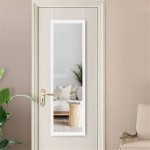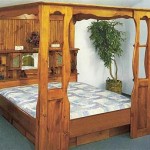How To Frame Out A Mirror With Crown Molding
Framing a mirror with crown molding elevates its appearance, transforming a simple looking glass into a decorative focal point. This project enhances the mirror's presence while adding architectural detail to the room. This guide outlines the process of framing a mirror with crown molding, providing a step-by-step approach for a successful outcome.
Before beginning, gather the necessary tools and materials. These include the crown molding itself, a miter saw, measuring tape, wood glue, finishing nails, a nail gun or hammer, caulk, wood filler, sandpaper, and paint or stain. Safety glasses and a dust mask are also recommended.
Accurate measurement is crucial for a professional-looking result. Measure the mirror's dimensions precisely, adding the desired width of the frame to each side. This determines the total length of molding required. It's advisable to purchase extra molding to account for potential errors during cutting.
Cutting crown molding requires understanding its unique profile. Crown molding is typically installed at an angle, not flat against the wall or mirror. This necessitates angled cuts known as miter and bevel cuts. A miter saw equipped with an angle finder simplifies this process. Practice cuts on scrap pieces are highly recommended, particularly for those unfamiliar with crown molding installation.
To determine the correct angles, hold a piece of crown molding against the mirror as it will be installed. Mark the angle on the molding. This angle will guide the miter saw settings. For outside corners, the miter saw is typically set to half the angle between the wall and the ceiling. For inside corners, the process is similar but requires adjusting the saw to the complementary angle.
Begin by cutting the top piece of molding. Ensure the molding lies flat against the fence of the miter saw while cutting. Once cut, hold the piece against the mirror to confirm accuracy. Repeat the process for the bottom piece, followed by the side pieces. Double-checking each cut against the mirror minimizes errors.
With all pieces cut, the assembly process can begin. Apply a thin bead of wood glue to the mitered edges of the molding pieces. Join the corners together, ensuring a tight fit. Secure the frame to the mirror using finishing nails. A nail gun provides efficient and consistent fastening, but a hammer can also be used. Space the nails evenly along the frame, ensuring they penetrate both the molding and the mirror's frame (if applicable). Be careful not to damage the mirror during this process. For frameless mirrors, consider using construction adhesive in addition to or instead of nails, ensuring the adhesive is compatible with both the mirror and the molding material.
After assembling the frame, address any gaps or imperfections. Wood filler effectively fills nail holes and minor gaps. Allow the filler to dry completely before sanding smooth. Caulk can be used to seal the seams where the molding meets the mirror, providing a seamless and finished appearance. Smooth the caulk with a damp finger or caulk tool for a clean line.
The final step involves finishing the frame. Sanding the entire frame with fine-grit sandpaper creates a smooth surface for painting or staining. Apply paint or stain according to the manufacturer's instructions. Multiple coats may be required for optimal coverage and durability. Allow ample drying time between each coat. Once the finish is dry, the newly framed mirror is ready to be hung and admired.
Different types of crown molding exist, each with a unique profile and installation considerations. Some common types include cove, ogee, and dentil molding. The chosen molding profile will influence the cutting angles and overall aesthetic. Researching different molding styles can help select the most appropriate option for the desired look.
For larger mirrors or intricate molding profiles, additional support may be necessary. Consider adding backing blocks to the frame, especially at the corners, to enhance stability and prevent warping. These blocks can be small pieces of wood glued and nailed to the back of the frame. They provide extra reinforcement and help maintain the frame's integrity over time.
Framing a mirror with crown molding is a rewarding project that enhances the mirror's aesthetic and adds a touch of elegance to any room. Careful planning, precise measurements, and attention to detail are essential for a successful outcome. By following these steps and utilizing the appropriate tools and techniques, one can transform a simple mirror into a stylish and sophisticated statement piece.

Bathroom Mirror Framed With Crown Molding Large Mirrors Frame Makeover

Crafty Again
How To Upgrade Your Builder Grade Mirror Frame It

Bathroom Mirror Framed With Crown Molding Hometalk

Bathroom Mirror Framed With Crown Molding Frame Mirrors Diy

Crafty Again

Simple Ways To Make A Framed Bathroom Mirror Hometalk

Crafty Again

How To Frame A Bathroom Mirror Nest For Less

Framing A Mirror Without Miter Cuts The Kim Six Fix








